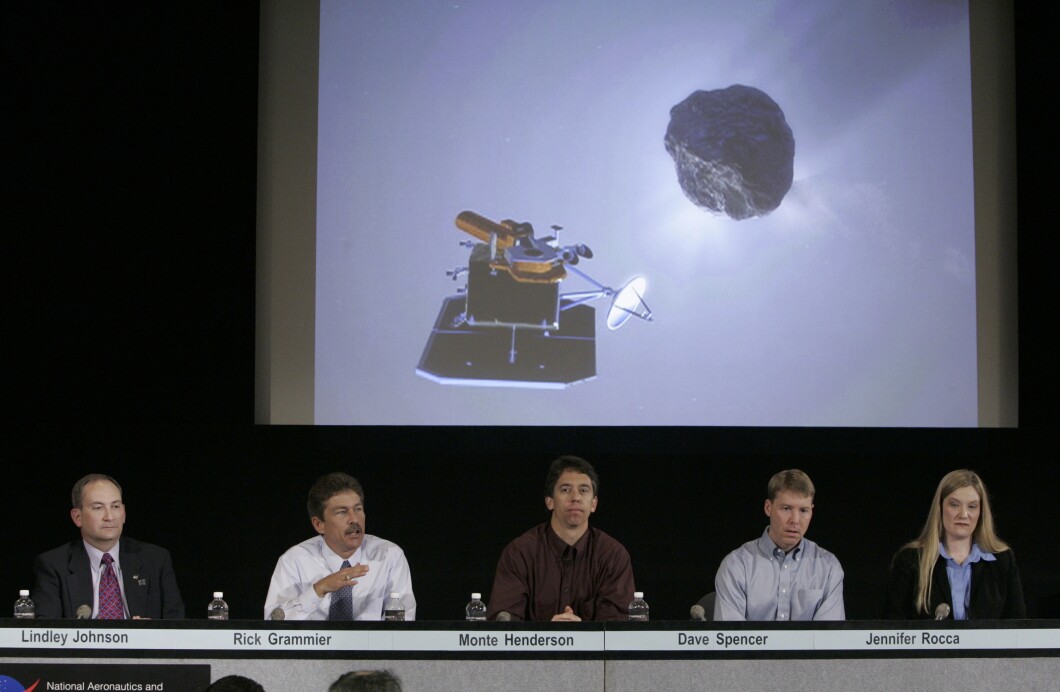
Recalling the fate of the dinosaurs, the ever-present possibility of a catastrophic asteroid impact has caused a great deal of worry for many.
Such worries, along with advances in science and technology, have led to the National Aeronautics and Space Administration creating the Planetary Defense Coordination Office, which runs the Asteroid Watch program.
WHO WAS THE REAL J. ROBERT OPPENHEIMER?
Lindley Johnson, NASA’s Planetary Defense Officer and Lead Program Executive for the Planetary Defense Coordination Office, spoke with the Washington Examiner to give insight into the historical program. He has been involved in Near Earth asteroid observations for more than 30 years.

The origins of the program lie in the 1990s when NASA started to devote more efforts to tracking near-Earth objects; efforts that grew throughout the 2000s. The NASA Authorization Act of 2005 tasked the agency with finding the population of near-Earth hazardous objects, which laid the foundations for the PDCO. The program was formalized over time, and officially established in 2016, with Johnson at its head.
The scale of the program is massive; Johnson said that the PDCO is currently tracking over 32,000 near-Earth objects.
“Currently, on our near-Earth asteroid catalog, we have a little over 32,000; 32,300 or so, of all sizes,” he said. “Now, we’re specifically tasked by Congress to find those that could be a significant impact threat; if they were to impact the Earth, do significant damage. And that threshold has kind of been established at 140 meters and larger, or the size of a football stadium … and we are tracking 10,500 near earth asteroids that are at least 140 meters and larger in size.”
Among the largest being tracked is over 18 1/2 miles in size, while the smallest is only a few feet.
But those anticipating a doomsday scenario in which humans go the way of the dinosaurs are mistaken; as Johnson notes, the PDCO catalog is so advanced that they are tracking near-Earth objects that are only expected to pass by Earth in centuries.
“Everything we find, we take observations on to determine the orbits, see where they’re going, and whether they’ll be any hazards to the Earth in the future. So that’s the that’s our strategy here,” he said. “Now we have the technology to find these objects. We just need to be looking for them and taking the observations. And once we find them, we can determine their orbits and know if any of them are going to be any threat to the Earth for the next century or so. So we can actually have quite a bit of warning, decades of warning; we just need to continue to look and project those orbits out.”
All objects expected to make impact on Earth in the next few decades are small enough that they won’t pose any threat, and will likely break up in Earth’s atmosphere.
The asteroid catalog is mostly complete; Johnson said he believes they have mapped out 96% to 97% of all asteroids that will pass by Earth larger than a kilometer in size. Most of the focus now is on finding smaller asteroids; he estimates that the PDCO currently has 40% to 45% of asteroids larger than 140 meters in diameter in the catalog.
To find them all, the program is investing in the Near-Earth Object Surveyor Space Telescope, which is currently on track to launch by early 2028.
The PDCO’s most notable recent activity, however, was the September Double Asteroid Redirection Test, in which a spacecraft rammed an asteroid 6.8 million miles from Earth, redirecting it away. In line with Johnson’s pledge that no asteroid doomsday scenario is in the near future, the asteroid didn’t pose an immediate threat. The test was meant to prepare for a possible future collision, which is at least decades away.

NASA’s DART will need some improvements if Earth wants to become truly invulnerable; the asteroid that created the Chixulub crater in Mexico, which wiped out the dinosaurs, was estimated to be around 6 miles across; far too big to be redirected by NASA’s current capabilities (the asteroid targeted in September was only about 530 feet in diameter). But, as Johnson assured the Washington Examiner, the agency will have decades to advance such technology before that even becomes a possibility.
Further advancing the PDCO’s capabilities, the program is in close cooperation with space agencies around the world, including the European and Japanese Space Agencies.
“There are some 18 space agencies and offices, countries around the world that are in involved with our efforts,” Johnson said. “We’ve coordinated on an international scale through the Committee on Peaceful Uses of Outer Space in the United Nations, and set up … the International Asteroid Warning Network that has some 50-some signatories to it now. And also a forum for the National Space Agencies to coordinate their activities, called the Space Mission Planning and Analysis Group, same page. We want all of the National Space Agencies on the same page on this.”
CLICK HERE FOR MORE FROM THE WASHINGTON EXAMINER
The PDCO also makes efforts to communicate its mission with the public, mostly through its Asteroid Watch dashboard on NASA’s website. The dashboard lists the next five Earth approaches to within 4.6 million miles, listing their size and other details as well. Most conveniently for the public, the dashboard always includes a comparison to show the size of each, with different asteroids being classified as roughly the size of a house, plane, car, and so on.
“Few people can picture 140 meters in their head,” Johnson said, explaining the rationale of the dashboard. “You know, what does that really mean? And so, you know, an analogy of a football stadium is something that they would have some perception of.”





